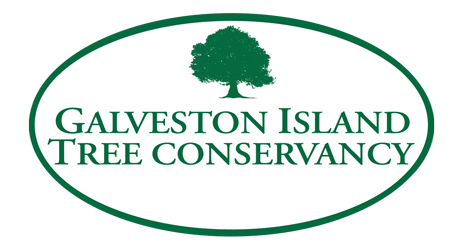New Tree in Town
by Margaret Canavan
GITC Board Member, Galveston Co. Master Gardener
Courtesy: Galveston Daily News.
There’s a new tree in town, and it’s a native Texan! It came to us thanks to Hurricane Ike. Following our massive tree loss from that storm, the Galveston Island Tree Conservancy formed and began the task of reforesting the island. We have encouraged planting a variety of hardy and native trees in addition to our Oaks. For the last several seasons, “NeighborWoods” streetside plantings have introduced new tree varieties, as well as bringing back the tried-and-true.
One such newcomer is blooming around town right now in several locations: The Wild Olive.
The botanical name is Cordia boissieri and it is better known as Anacahuita, Mexican Olive, or Texas Wild Olive. The Wild Olive is a native that grows primarily in south Texas and northern Mexico. These are typically small trees, around 20-25 feet maximum with a symmetrical round crown. The national champion tree is in Cameron County of far south Texas and measures 25 tall by 33 feet wide. Most of ours on the Island are young and still bush-like, planted within the past two or three years, but given time we may produce a champion.
The Wild Olive is an attractive and easygoing ornamental. The stunning funnel-shaped white flowers can measure over 2 inches across, attracting a variety of butterflies and bees. The bloom period begins in May and will continue almost all year in Galveston’s climate. It is evergreen and cold hardy to about 20-degrees F, usually retaining its foliage all winter if no hard freeze visits. (There is a brief period in spring when it re-leafs and looks a bit careworn.) It is heat and drought tolerant once established, and insect and disease pests are generally of little or no concern. The tree has a lifespan of 30-50 years. Birds and other wildlife feed on the olive-like fruit, hence its name. There are reports that jellies made from the fruits are safe to eat but I think I’ll leave them for the birds. Even though the common name implies kin-ship, the Mexican Olive is in no way related to Olive Trees, Olea europaea. We do have those around Galveston but they will need to be the focus of a future article!
Wild Olive grows and flowers best in full sun or partial shade on well-drained soils and has been included in several NeighborWoods streetside plantings. Its status as a small tree, make it possible to plant under power lines and in small spaces. The tree can be trained to one trunk for use near walks and patios where clearance beneath the canopy is needed, or can be grown in a shrubbier form with several trunks. It is an ideal accent in a small garden area. “One of the often overlooked features of Mexican Olives is the beautiful deeply furrowed bark on the trunk and limbs; it gets overshadowed by the deep green leaves and beautiful white flowers,” said GITC Sr. Arborist, Priscilla Files.
Take yourself on a tree tour and see some of these new residents. The Texas Heroes/Palm Gardens area has narrower right-of-way areas than most Galveston neighborhoods and several Wild Olives have been planted there. Travel along Wharton, Travis, Bowie or Houston Drive and you will see several which were planted in early 2012, already sporting showy white blossoms. There are a couple of fine specimens around 4823 Houston. They have also been added in Kempner Park neighborhood (best examples in the 2900 Block of Avenue Q, 3300 block of Q½, and two at 3124 Avenue R), Lasker Park area (3700 block of Avenue N, and 2600 block of 39th Street), and Old Seawall Neighborhood (several small ones in the area of 8th, 9th, Winnie and Church). The largest in the public right of way is in the 2400 block of Avenue L, vying for space with a palmetto and tallow and is doing quite well. The largest I’ve seen is in my own back yard, planted post-Ike and now about 12 feet tall. Surely the others will quickly catch up!
Hurricane Ike caused the loss of 40,000 trees on Galveston Island. The Galveston Island Tree Conservancy was formed to address that loss and to date has replaced almost 11,000 through grant-funded plantings and giveaways, with more planned.
———
“Tree Stories” is an ongoing series of articles about island trees, tree care and tree issues. If you have or know of a special tree on Galveston Island that should be highlighted, email treesforgalveston@gmail.com. Margaret Canavan is a Galveston resident, a Galveston County Master Gardener, and a member of the Galveston Island Tree Conservancy Board.


